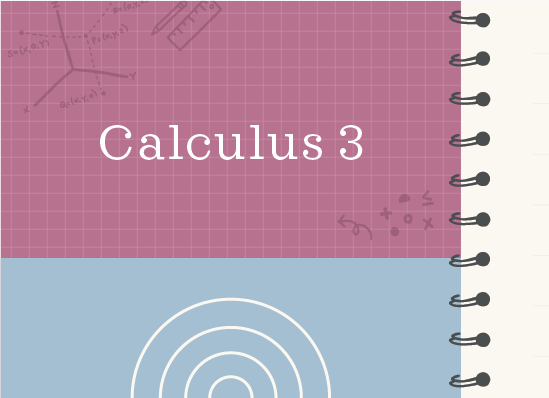Finding the equation of a plane
Formulas for the equation of a plane
The equation of a plane is given by the formula
???a(x-x_1)+b(y-y_1)+c(z-z_1)=0???
where ???\langle{a},b,c\rangle??? are the direction numbers from the normal vector to the plane.
Hi! I'm krista.
I create online courses to help you rock your math class. Read more.
Given three points in the plane ???P(P_1,P_2,P_3)???, ???Q(Q_1,Q_2,Q_3)??? and ???R(R_1,R_2,R_3)???, we can find the equation of the plane by
using the points to generate two vectors
???\vec{PQ}=\langle(Q_1-P_1),(Q_2-P_2),(Q_3-P_3)\rangle???
???\vec{PR}=\langle(R_1-P_1),(R_2-P_2),(R_3-P_3)\rangle???,
taking the cross product of ???\vec{PQ}??? and ???\vec{PR}??? to get the normal vector to the plane
???\vec{PQ}\times\vec{PR}=\begin{vmatrix}\bold i&\bold j&\bold k\\PQ_1&PQ_2&PQ_3\\PR_1&PR_2&PR_3\end{vmatrix}=\bold i\begin{vmatrix}PQ_2&PQ_3\\PR_2&PR_3\end{vmatrix}-\bold j\begin{vmatrix}PQ_1&PQ_3\\PR_1&PR_3\end{vmatrix}+\bold k\begin{vmatrix}PQ_1&PQ_2\\PR_1&PR_2\end{vmatrix}???
???=\bold i(PQ_2PR_3-PQ_3PR_2)-\bold j(PQ_1PR_3-PQ_3PR_1)???
???+\bold k(PQ_1PR_2-PQ_2PR_1)???
and then plugging the given points and the normal vector into the formula for the equation of the plane.
Given three points that lie in the plane, we’ll use a specific formula to find th equation of the plane
Take the course
Want to learn more about Calculus 3? I have a step-by-step course for that. :)
Finding a plane from three points that lie in the plane
Example
Find the equation of the plane that passes through the given points.
???P(1,0,2)???
???Q(2,-1,3)???
???R(1,-1,2)???
We’ll start by using the given points ???P???, ???Q??? and ???R??? to find two vectors ???\vec{PQ}??? and ???\vec{PR}??? that lie in the plane.
???\vec{PQ}=\left\langle(2-1),(-1-0),(3-2)\right\rangle???
???\vec{PQ}=\left\langle1,-1,1\right\rangle???
and
???\vec{PR}=\left\langle(1-1),(-1-0),(2-2)\right\rangle???
???\vec{PR}=\left\langle0,-1,0\right\rangle???
We’ll start by using the given points P, Q and R to find two vectors PQ and PR that lie in the plane.
Taking the cross product of these two vectors, we get
???\vec{PQ}\times\vec{PR}=\begin{vmatrix}\bold i&\bold j&\bold k\\1&-1&1\\0&-1&0\end{vmatrix}???
???\vec{PQ}\times\vec{PR}=\bold i\begin{vmatrix}-1&1\\-1&0\end{vmatrix}-\bold j\begin{vmatrix}1&1\\0&0\end{vmatrix}+\bold k\begin{vmatrix}1&-1\\0&-1\end{vmatrix}???
???\vec{PQ}\times\vec{PR}=\left[(-1)(0)-(1)(-1)\right]\bold i-\left[(1)(0)-(1)(0)\right]\bold j+\left[(1)(-1)-(-1)(0)\right]\bold k???
???\vec{PQ}\times\vec{PR}=(0+1)\bold i-(0-0)\bold j+(-1-0)\bold k???
???\vec{PQ}\times\vec{PR}=1\bold i-0\bold j-1\bold k???
???\vec{PQ}\times\vec{PR}=\langle 1,0,-1\rangle???
Now we’ll plug any of the given points, we’ll use ???P???, and the direction numbers from the cross product into the formula for the equation of the plane.
???(1)(x-1)+(0)(y-0)+(-1)(z-2)=0???
???x-1-z+2=0???
???x-z=-1???






